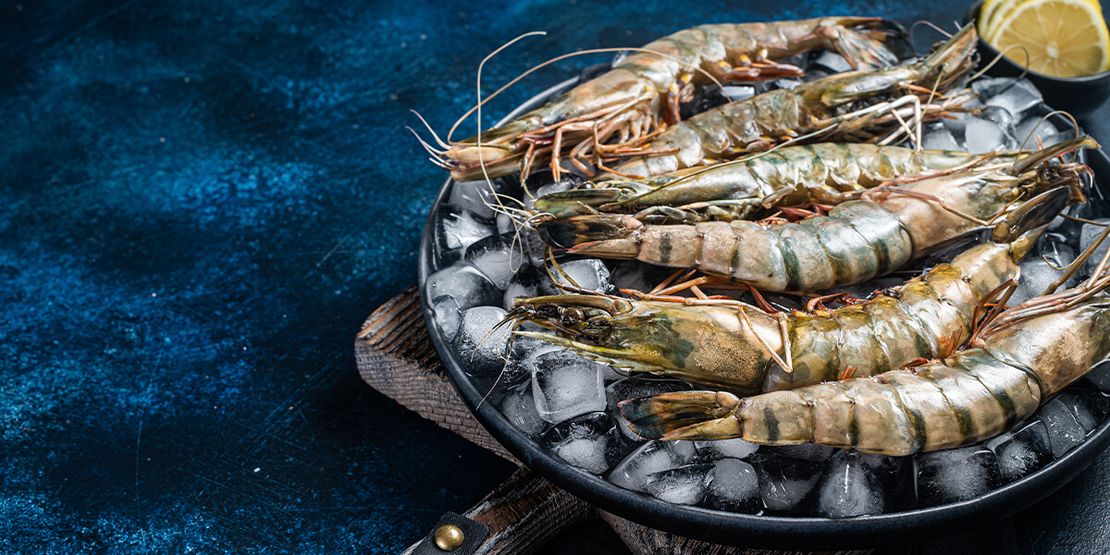Black Tiger Shrimp: Exploring Its Aquaculture and Complex Landscape
The black tiger shrimp, scientifically known as Penaeus monodon, stands as a captivating species of saltwater shrimp that has transcended its origins in the Indo-Pacific region to become a global economic force. Revered for its distinctive black and white striped pattern, this species has found itself at the center of a multi-billion dollar aquaculture industry.
However, the tale of black tiger shrimp is not one of unbridled success; it unfolds against a backdrop of ecological challenges and social considerations, prompting a critical examination of the industry's practices and a concerted effort towards sustainable solutions.
The Black Tiger Shrimp: A Culinary Icon with Stripes
In the intricate tapestry of aquatic life, the black tiger shrimp emerges as a culinary icon, sought after for its delectable meat. Indigenous to mangrove forests, estuaries, and nearshore waters in the Indo-Pacific, this species exhibits a striking black and white striped pattern that distinguishes it in both the wild and aquaculture settings.
Renowned for their voracious appetites and rapid growth, black tiger shrimp have seamlessly transitioned from their natural habitats to the controlled environments of aquaculture, becoming a linchpin of the global shrimp farming industry.
Aquaculture's Triumphs and Trials: Unveiling the Industry Dynamics
The allure of black tiger shrimp aquaculture has propelled its production into the economic limelight, particularly in Southeast Asian nations like Thailand, Vietnam, and Indonesia. The industry, valued in the billions, has witnessed a surge in demand, driving a robust global market for this prized shrimp species.
However, the narrative of success harbors a shadow of environmental and social concerns. Mangrove forest destruction, the use of potentially harmful chemicals and antibiotics, and the exploitation of local communities and workers have become indelible marks on the industry's ledger.
Balancing Act: The Imperative for Sustainable Practices
To redress the environmental and social challenges associated with black tiger shrimp farming, various stakeholders, including organizations and governments, have spearheaded certification programs and standards for sustainable aquaculture.
These initiatives strive to recalibrate the industry towards environmentally and socially responsible practices. The overarching goal is to ensure that the production of black tiger shrimp aligns with principles of sustainability, fostering harmonious coexistence with both nature and the communities involved.
Certification Initiatives: Paving the Way to Responsible Aquaculture
Certification programs, designed to set benchmarks for responsible production, have become instrumental in reshaping the trajectory of black tiger shrimp aquaculture. These initiatives focus on mitigating environmental impact, promoting ethical labor practices, and safeguarding the interests of local communities.
By adhering to these standards, aquaculture enterprises seek not only to produce high-quality shrimp but also to contribute positively to ecosystems and societies, ushering in a new era of conscientious and sustainable black tiger shrimp farming.
The Road Ahead: Charting a Course for Sustainable Seafood
In conclusion, the black tiger shrimp, with its alluring stripes and succulent meat, symbolizes both the triumphs and tribulations of modern aquaculture. While the industry has thrived economically, its ecological and social footprint demands scrutiny and reform. The ongoing efforts to instill sustainability through certification programs signal a collective commitment to navigate the depths of responsible aquaculture.
As the industry evolves, the black tiger shrimp is poised to become not just a culinary delight but a beacon of sustainable seafood, inspiring a future where the delicate balance between human consumption and environmental preservation is thoughtfully maintained.
Recommended for you
How To Deal With Sexually Confused Straight People in Thailand?
Jamie (Curious Bear)
Thailand's National Parks: A Glimpse into Nature and Wildlife
Dr. Theodore (Professor Bear)
Thai National Theatre: A Cultural Showcase in Bangkok
The Bear Team















